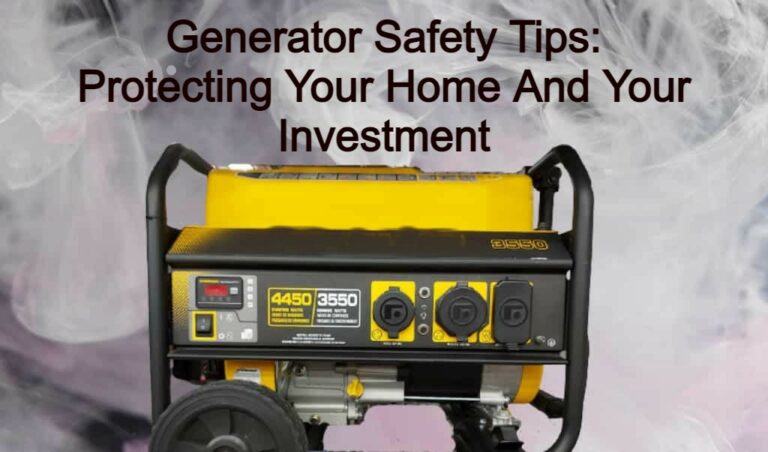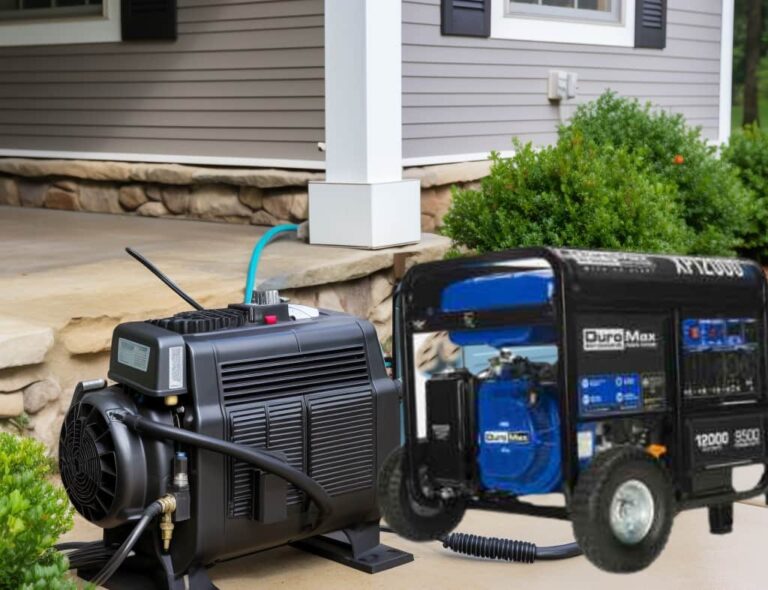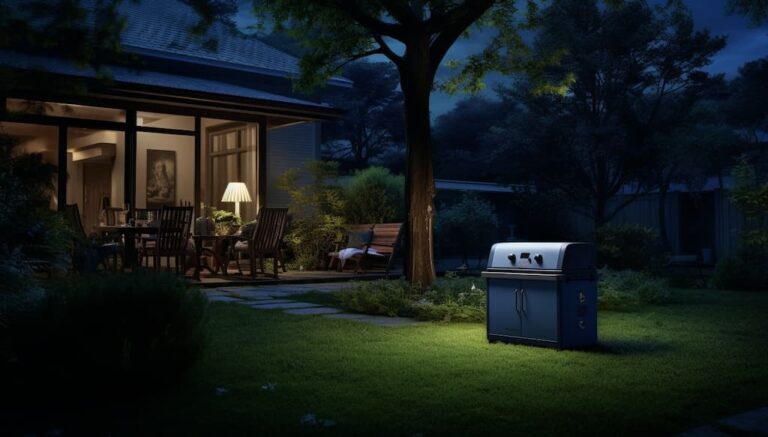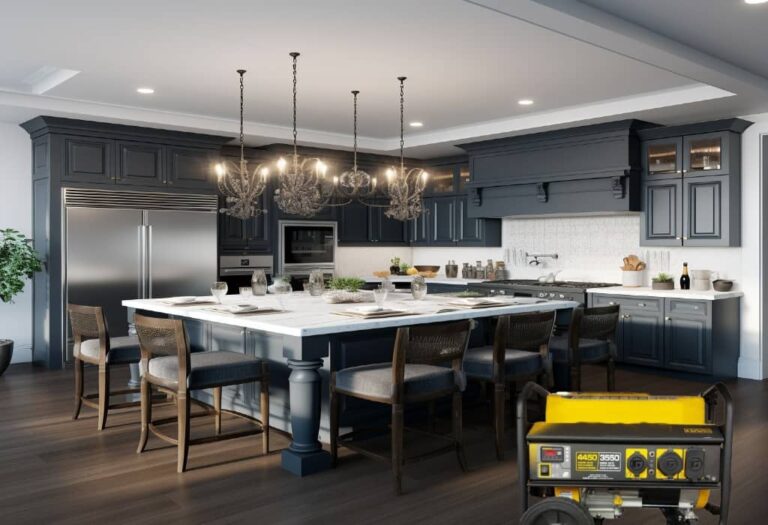Choosing Between a Transfer Switch and Interlock for Safety
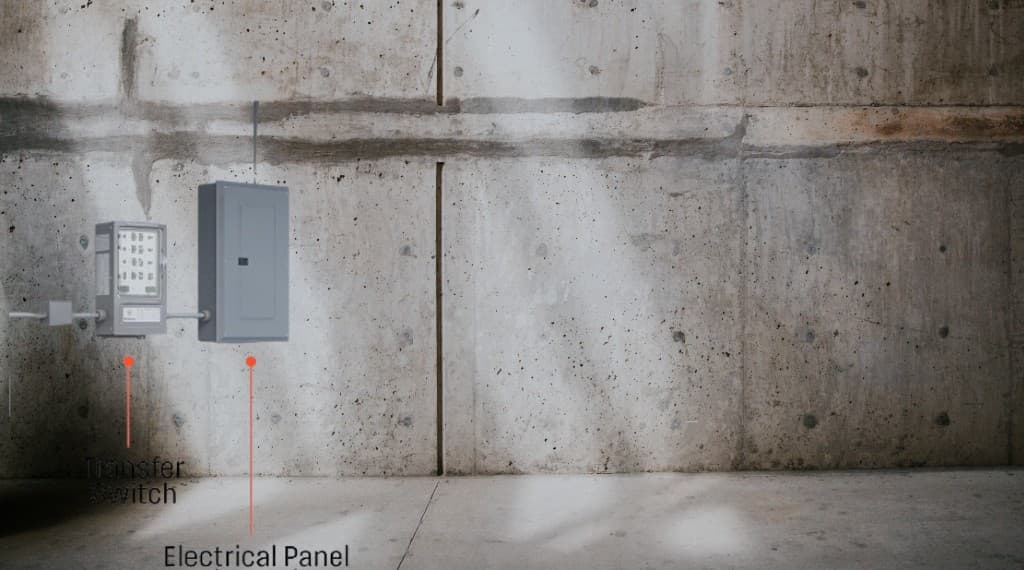
Ever thought about ensuring your safety during power outages?
Let me enlighten you on the significance of selecting between a transfer switch and an interlock kit. With a transfer switch or interlock kit, you can effortlessly switch between mains power and generator power, ensuring that back feeding becomes impossible.
While it is technically feasible to backfeed without a transfer switch or interlock kit, it is not advisable. Insurance companies and local codes often mandate the installation of these safety measures to prevent such incidents.
Backfeeding Risks and the Need for Safety Measures
It is essential to comprehend the risks involved and take the necessary precautions. One effective method to prevent backfeeding is by utilizing a transfer switch or an interlock kit. These devices ensure the secure direction of the generator’s power to the desired circuits, eliminating the risk of backfeeding.
A transfer switch functions as a distinct breaker panel, enabling toggling between mains power and generator power. Conversely, an interlock kit is affixed directly onto the main breaker box, physically obstructing the breaker switch for generator power.
Both options make it physically impossible to backfeed mains power, creating a safer environment for all parties involved.
Keep in mind that investing in these safety measures is vital for line workers’ well-being and your community’s overall safety.
Understanding the Difference: Transfer Switch Vs Interlock Kit
It is essential to delve into their distinct functionalities and installation methods to understand the disparities between a transfer switch and an interlock kit.
Transfer Switch: – Functions as an autonomous breaker panel that redirects circuits. – Facilitates seamless switching between mains power and generator power.
Interlock Kit: – Directly affixes onto the primary breaker box. – Physically obstructs the breaker switch for generator power.
The transfer switch and interlock kit are pivotal in averting the perilous practice of backfeeding electricity from the generator to the power lines. This practice poses a grave threat to line crew workers’ safety during power outages, not to mention the potential for fatal accidents. Consequently, insurance companies and local codes/laws frequently mandate the installation of either a transfer switch or an interlock kit.
While a transfer switch is affixed to the wall adjacent to the primary breaker panel, an interlock kit is directly mounted onto the main breaker box. The selection between the two options largely hinges on the specific requirements and intricacies of the installation process.
Transfer Switch: Features and Functionality
I prefer the transfer switch because it allows me to switch between mains power and generator power easily.
The transfer switch is mounted on the wall beside my main breaker panel and resembles a miniature breaker box or sub panel. It contains 8-10 circuit breakers and a mains power or generator switch.
I can select specific breakers on my main panel to be powered by the transfer switch. It is important to note that I am limited to the number of breakers on the transfer switch.
The transfer switch offers the convenience of swiftly toggling between the two power sources without any inconvenience. This characteristic instills in me a sense of belonging to a community that places a high value on safety and preparedness, ensuring I have power when needed.
Interlock Kit: Features and Functionality
The interlock kit, affixed directly to the main breaker box, features a sliding mechanism with two positions that physically obstruct the breaker switch for generator power when the main power is active. This ensures the safety of line crew workers and prevents the potentially fatal backfeeding of electricity.
The interlock kit is a requirement, as insurance companies and local codes and laws often mandate it. Discerning the disparity between a transfer switch and an interlock kit is important.
While a transfer switch redirects circuits using a separate breaker panel, the interlock kit physically hinders the breaker switch. This means that mains power must be deactivated to access the generator breaker switch, effectively preventing any backfeeding.
The interlock kit is a dependable, cost-effective solution for maintaining safety during power outages.
Costs and Considerations for Installation
Installation costs for the transfer switch and interlock kit can vary depending on factors such as location, complexity of installation, and specific requirements. Considering these costs is vital when deciding which option is best for your needs.
For a transfer switch, the installation cost can range from $500 to $2,000. Conversely, an interlock kit installation can range from $200 to $500. Remember that these costs may vary, and additional expenses may include hiring a licensed electrician for the installation.
Although there may be some upfront costs, it’s important to remember that the long-term savings from preventing accidents and damage outweigh the initial investment. So, when considering the costs and benefits, investing in the safety of your home and family is wise with either a transfer switch or interlock kit.
Making the Right Choice for Your Safety Needs
When considering which option to choose, it’s vital to consider your specific safety needs. It’s essential to select the appropriate equipment to safeguard yourself and others.
Here are some factors to ponder:
- Understanding the Significance:
- Ensures the physical well-being of line crew workers during power outages.
- Prevents the dangerous backfeeding of electricity from the generator to power lines.
- Backfeeding can lead to catastrophic accidents for line workers.
- Insurance companies and local codes/laws often require installation.
- Distinction Between Transfer Switch and Interlock Kit:
- A transfer switch is a separate breaker panel that redirects circuits.
- An interlock kit is mounted directly onto the main breaker box.
- Both render it physically impossible to backfeed mains power.
Frequently Asked Questions
Are Transfer Switches and Interlock Kits Required by Law or Just Recommended?
Transfer switches and interlock kits serve a dual purpose – they adhere to legal requirements while prioritizing safety. These devices effectively prevent the potentially hazardous backfeeding of electricity into power lines, thus safeguarding line workers who may be exposed to dangerous electrical currents. It is worth noting that insurance companies and local building codes often mandate the installation of transfer switches and interlock kits.
Delving further into the matter, it becomes evident that these safety measures are necessary and crucial. Not only do they ensure the protection of line workers, but they also minimize the risk of electrical accidents and potential property damage. By adhering to these regulations, homeowners can rest assured that they take the necessary precautions to prevent untoward incidents.
Moreover, it is important to consider that the requirement of transfer switches and interlock kits is not an isolated recommendation. These safety devices are part of a comprehensive approach to electrical safety, which includes complying with local codes and regulations, obtaining necessary permits, and engaging in regular maintenance and inspection of electrical systems. Thus, it is not only a legal obligation but also a responsible choice for homeowners to prioritize the installation of transfer switches and interlock kits.
Can a Transfer Switch or Interlock Kit Be Installed by a Homeowner or Is a Licensed Electrician Necessary?
Hiring a licensed electrician’s expertise is imperative to install a transfer switch or interlock kit. This ensures proper installation and compliance with local codes and safety regulations, instilling a sense of reassurance.
Entrusting a licensed electrician with this task is crucial as they possess the necessary knowledge and skills to navigate the intricacies. Delving into the intricacies of electrical work without their assistance can be precarious and may lead to costly mistakes or even safety hazards.
In light of these considerations, it becomes evident that the involvement of a licensed electrician is not only prudent but also necessary. Not to mention, it is a legal requirement in many jurisdictions.
The expertise of a licensed electrician ensures that the installation is carried out in a manner that adheres to local codes and safety regulations. This guarantees the safety of both the homeowner and the property.
Equally important, a licensed electrician possesses the knowledge and experience to identify any potential issues or hazards that may arise during the installation process. They can address these concerns promptly and effectively, minimizing any risks involved.
Moreover, a licensed electrician is uniquely equipped to handle any unforeseen challenges during the installation. Their expertise allows them to adapt and find suitable solutions, ensuring a smooth and successful installation.
Attracting to install a transfer switch or interlock kit without professional assistance is ill-advised and can have legal repercussions. Installing these devices requires specialized skills and knowledge that only a licensed electrician possesses, like any electrical work.
Furthermore, a licensed electrician is familiar with the specific requirements and regulations of the local area. They are well-versed in the necessary permits and inspections that may be required, ensuring that all legal obligations are met.
Therefore, it is abundantly clear that installing a transfer switch or interlock kit necessitates the involvement of a licensed electrician. This is the safest and most reliable course of action to ensure proper installation, compliance with local codes, and the overall well-being of the homeowner and the property.
What Are the Potential Consequences of Backfeeding Electricity From a Generator to Power Lines?
Backfeeding electricity from a generator to power lines can have grave repercussions. It can lead to fatal accidents for line workers and cause damage to electrical equipment. It is imperative to employ appropriate safety measures to avert backfeeding. In light of these circumstances, it is crucial to understand the potential risks associated with this practice.
First and foremost, backfeeding can jeopardize the lives of line workers. This perilous act exposes them to the danger of electrocution. In addition, it poses a significant threat to the integrity of electrical equipment. The high voltage generated by the generator can overload and damage the delicate components within the system.
To compound matters further, backfeeding can have cascading effects on the entire power grid. Not only does it disrupt the flow of electricity, but it can also lead to widespread power outages. The intricate network of power lines and transformers can suffer irreparable harm, resulting in costly repairs and prolonged downtime for consumers.
Moreover, backfeeding can hurt the general public. Any unsuspecting individual who comes into contact with a power line unknowingly backfed can be subjected to serious injury or even death. This underscores the importance of implementing stringent safety protocols to prevent such incidents.
Are There Any Limitations to the Number of Circuits That a Transfer Switch Can power?
Certain limitations exist to the number of circuits powered by a transfer switch. These limitations are tied to the number of breakers on the transfer switch, which typically ranges around 8-10 circuits. It is worth delving into that the transfer switch can only support a specific number of circuits due to its breaker capacity.
In light of this, it is important to note that the transfer switch cannot power an unlimited number of circuits. It is equally important to understand that the breaker capacity of the transfer switch restricts the number of circuits it can handle. It is crucial to recognize that the transfer switch’s capability to power circuits is uniquely determined by its number of breakers.
Unlike other devices, the transfer switch can only support a limited number of circuits. It cannot power an excessive amount of circuits as some might hope. Identically, the transfer switch’s ability to handle circuits is restricted by its breaker capacity. Similarly, the transfer switch’s breaker capacity determines the number of circuits it can handle.
Furthermore, it is important to note that the transfer switch’s breaker capacity limits the number of circuits it can power. Additionally, it is worth mentioning that the breaker capacity of the transfer switch uniquely determines the number of circuits it is capable of supporting. Moreover, it is crucial to recognize that the transfer switch’s breaker capacity inherently affects the number of circuits it can handle.
Therefore, when considering the number of circuits that a transfer switch can power, it is important to consider its breaker capacity. Firstly, the transfer switch’s breaker capacity determines the maximum number of circuits it can support. Secondly, the breaker capacity of the transfer switch uniquely limits the number of circuits it can handle. Thirdly, it is crucial to recognize that the transfer switch’s breaker capacity directly affects the number of circuits it can power.
Are Transfer Switches and Interlock Kits Compatible With All Types of Generators?
Transfer switches and interlock kits are compatible with a wide range of generators. They ensure the safe and appropriate power distribution, eliminating the risk of backfeeding and providing protection for line workers. These devices are vital in maintaining a secure and efficient power supply.
It is essential to consider the compatibility of transfer switches and interlock kits with different generator types. Using these devices ensures power is distributed appropriately without risk of damage or malfunction. This compatibility is crucial for the smooth operation of generators and the safety of everyone involved.
One cannot underestimate the importance of transfer switches and interlock kits regarding power distribution. They guarantee that electricity is directed to the right places, preventing any potential hazards that may arise from improper power flow. This is particularly significant for line workers who perform maintenance or repairs on electrical systems.
In addition to their compatibility with various generators, transfer switches, and interlock kits offer additional benefits. These include enhanced safety measures, improved efficiency, and the prevention of power surges. These devices work with generators to provide a reliable and stable power supply.
Conclusion
Choosing between a transfer switch and an interlock kit can be likened to deciding between a robust shield and an impenetrable fortress when it comes to ensuring the safety of line workers. Both options protect against backfeeding and play a crucial role in safeguarding lives.
Although installation costs may appear daunting, they are insignificant compared to the immeasurable value of preventing accidents and guaranteeing peace of mind.
Therefore, let us make the correct decision, strengthen our homes, and shield those who tirelessly ensure the uninterrupted flow of power.
